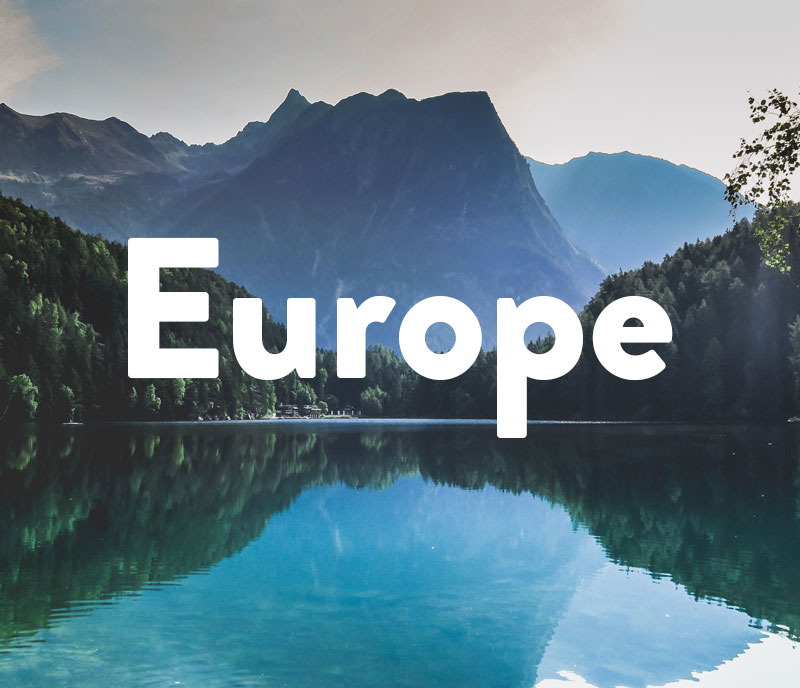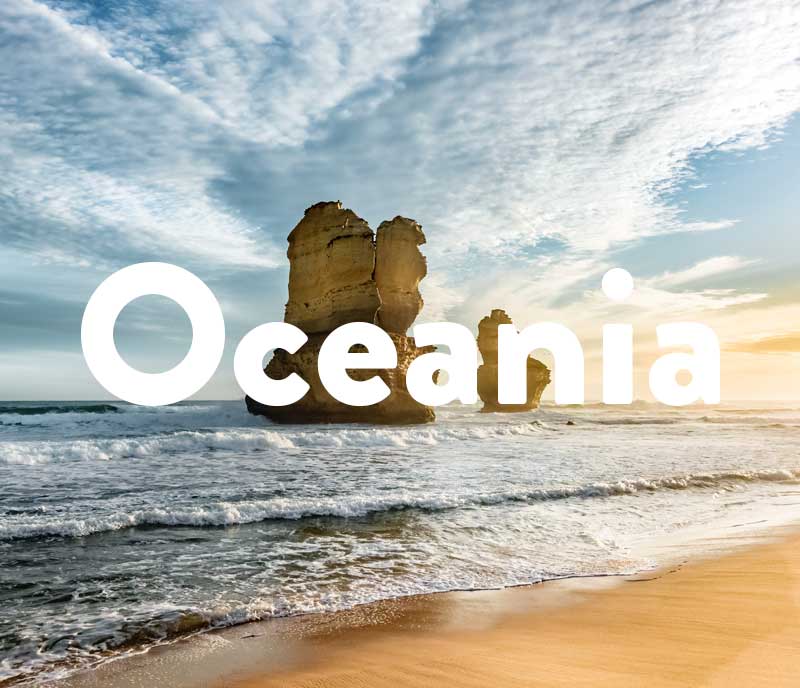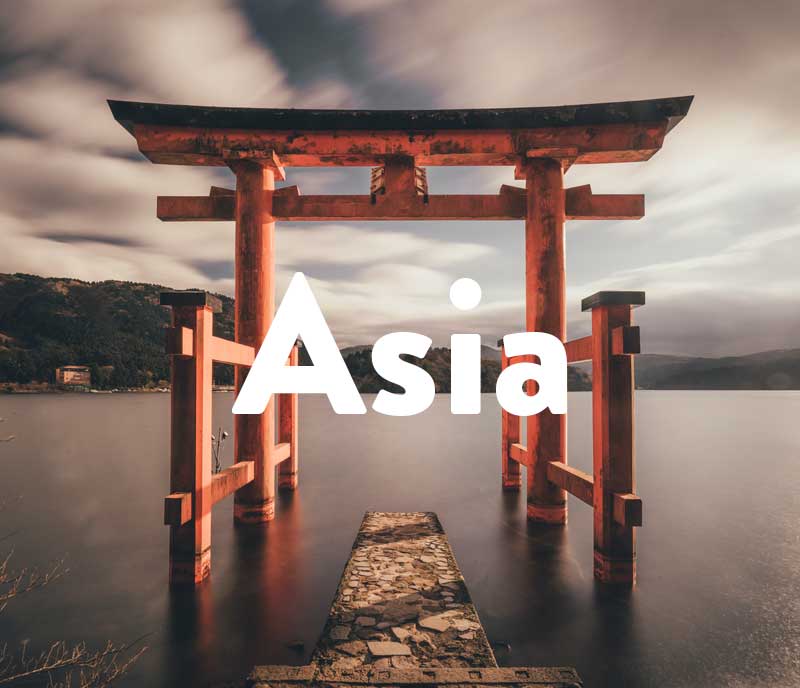The Solomon Island’s truly unique culture and slow-paced way of life will leave you surprised and delighted. Not yet a major travel destination in the minds of many, this up and coming bucket list country offers a fabulous mix of beach, boat and island life, as well as rainforest beauty.
Table of Contents
- The Key Info
- The Country in Numbers
- The Five Largest Cities
- Top Tourist Attractions
- When To Travel
- Safety for Travelers
- Important Holidays
- Visa
- Currency
- Packing List
- Dos and Don’ts
- Secret Blogger Tips
- Top Instagrammable Places
- Fun Facts
Dive into our (free) travel guides below!
.
.
.
.
.
.
.
.
Key Info
The Solomon Islands are a remote group of tropical islands in the South Pacific Ocean. They lie in between the popular tourist islands of Papua New Guinea and Fiji, however, what awaits you here is something very different. You won’t find crowded tourist resorts, instead beach side bungalows and rainforest retreats.
Being a relatively new entrant to the travel market, means many of its natural features and small coral islands are unspoilt. Honiara, the country’s capital, is the gateway to exploring the six major Pacific islands and over 900 smaller islands. Some are volcanic, others are swamp forests, but they are all a world away from modern life.
Country in Numbers
- Population number: 652,858
- Total size of the country: 28,370 km²
- Capital city: Honiara
- Currency: Solomon Islands Dollar (SI$)
- Main Language: English
- Religion: Christian 90% (Protestant 70%, Roman Catholic Church 20%), Animism 5%, Other 5%
The Largest Provinces in the Solomon Islands
1. Malaita – Population: 137,596
The provincial capital of the Malaita Province, Auki, lies directly above Langa Langa Lagoon. Even though tourism is underdeveloped in this area, the artificial island of Laulasi has been attracting tourists since the 1970’s. Watch villagers in action, building boats from natural resources and creating shell money, which is still in use today. Relax in waterside bungalows while you watch canoes sail by. This is the real tropical paradise.
2. Guadalcanal – Population: 93,613
The largest island in the Solomon Islands is a natural playground for the intrepid spirit. On Bonegi beach, you will feel like you are entering a movie set. Two Japanese shipwrecks lie just meters away from the black sand shoreline, perfect for snorkelling and diving. Tenaru Waterfalls is another must-see spectacle. A four hour trek along the river will lead you to the 63 meter falls plunging into the pools below. Stop for a swim and enjoy the tranquility before heading back.
3. Western Province – Population: 76,649
Gizo is the tourism center of the Western Province, an ideal place to base yourself for a few days or more. Hire a Surfboard, kayak or motorboat for an exciting few hours on the water. Visit the nearby volcanic island of Kolombangara for its diverse animal life and rainforest hikes. Tuck into delicious freshly made seafood dishes at the waterfront restaurants to finish each day.
4. Honiara – Population: 64,609
It is likely that the Solomon Islands capital will be the starting point of your exciting adventure around these magical islands. Located on Guadalcanal Island, Honiara International Airport is the country’s main air hub. The capital’s fascinating World War II past can be found at the National Museum and the Vilu War open-air museum. Alternatively, tour guides can take you around the town’s war sites, memorials and unmarked graves, while telling stories of local heroes.
5. Makira-Ulawa – Population: 40,419
The Makira-Ulawa province is one of the Solomon Island’s most southerly regions. Makira Island is the largest in the province with a strong Melanesian culture and amazing wildlife. The mountainous spine, swamp land and many rivers are a haven for spotting rare species. Look out for the unique olive turtle and saltwater crocodiles that inhabit the island. The variety of rare plants, trees and birds in the region has also created conservation areas popular with bird watchers.
Top Tourist Attractions
1. Mataniko Falls
One of the best hikes in the country starts in Lelei village, near Honiara. The route, which is best with a tour guide, takes in rainforest walks, muddy hill climbs and a waterfall descent. Water thunders down over giant boulders into the pools below, then crashes into a hidden cave. The cave was actually used by the Japanese as a hiding place in the war. You may even come across some World War II remains on the way.
2. Skull Island
This tiny sacred island in the middle of the Vonavona Lagoon lives up to its name, littered with skulls and shrines. These are preserved from Ancient Melanesia where head hunting was infamous in the South Pacific. This eerie but fascinating island can be visited, but only with a tour with the village chief. It is thought to be dangerous for visitors to come without the knowledge of the chief.
3. Kolombangara
Kolmbangara Island is home to a semi extinct volcano, vibrant jungle life and a stunning waterfront. The trek to the volcano’s crater takes in burial site and rainforest villages spread around the mountain’s valleys. This is a two or three-day tour, so it gives you the opportunity to camp in the heart of the rainforest. If you are just visiting for the day, explore the island’s rich biodiversity and look out for unique species of birds such as the Kolombandara White Eye.
4. Lake Tegano
On the Island of Rennell, the UNESCO World Heritage Site of Lake Tegano is the stand out destination. A day on the lake can be filled with activity. Have a go at canoeing, take part in some snorkelling or discover the local wildlife. The evenings are perfect for a dip in the cave pools, then set up camp in the dense forest for a night to remember.
5. Scuba Diving
The islands crystal blue waters and it’s abundance of underwater life make the islands one of the world’s best diving destinations. With so many pristine diving spots to visit, it is difficult to pick just one. Each diving spot has something unique. The remote locations and lack of fisherman mean you will likely have the waters to yourself. Endless coral gardens are filled with colorful marine life. Plus, an array of World War II wrecks are scattered around the island’s beaches forming new artificial reefs. Look out for turtles, sharks, starfish, barracuda and much more in these underwater playgrounds.
Best time to travel
The equatorial climate means the Solomon Islands are humid all year around. Temperatures float around the 27 degrees Celsius mark with a wet season between November and April. Scuba diving fanatics should avoid the rough seas between June and September, though the weather is ideal for hiking. The shoulder seasons – April to May and October to November are great times to visit. The calmer weather and off-peak tourist season provide great value for money.
Safety for travelers in the Solomon Islands.
Tourists and wealthy looking foreigners are targeted by pickpockets, especially in Honiara. Also, beware of large packs of dogs roaming the capital. Despite this, the Solomon Islands are generally a very safe country to visit. Respect the local customs, take the usual precautions and you will have a fantastic trip.
Homosexuality is not recognized or legal on the Islands and sam-sex is punishable by up to 14 years imprisonment (although this isn’t enforced), so it is advised to refrain from public displays of affection.
The island’s position in the world means earthquakes and tropical cyclones can occur. Do listen to the official Solomon Islands radio station during your visit for the latest news.
Holidays in the Solomon Islands
- 1st January: New Year’s Day
- March / April (varies every year): Good Friday, Holy Saturday & Easter Monday
- May / June (varies every year): Whit Monday
- The second Monday in June: Queen’s Birthday
- 7th July: Independence Day
- 25th December: Christmas Day
- 26th December: National Day of Thanksgiving
Additionally, each province has its own Province Day:
- 25th February: Choiseul Province
- 2nd June: Isabel Province
- 8th June: Temotu Province
- 29th June: Central Province
- 20th July: Rennell and Bellona Province
- 1st August: Makira-Ulawa Province
- 15th August: Malaita Province
- 7th December: Western Province
Visa Requirements
You should have no problems obtaining entrance to the Solomon Islands. Citizens of most Commonwealth countries, European Union countries and the United States can travel to the Solomon Islands visa-free. These citizens can stay for up to 90 days. A tourist visa is needed for all other countries, please check your local embassy’s website for more details.
Currency
The Solomon Islands use the Solomon Islands dollar (SBD). Some hotels and shops do accept credit cards but it is best to carry money as most purchases require cash. There are ATMs in the island’s main cities. Most do charge a fee for withdrawals so it is advantageous to get your hands on some currency before the trip.
Dos and Don’ts in the Solomon Islands
| Do | Don’t |
| Purchase a local sim card: Your mobile network provider is unlikely to work in the Solomon Islands. Wi-Fi is very hard to find too. The best option to keep connected is by purchasing a local prepaid sim. | Expect luxuries: Away from the cities, you will feel like you have traveled back in time. Humble villages have no electricity, running water, or shops. Embrace this simple life and you may enjoy it more than you think. |
| Respect the local ‘Kastoms’: Kastom is Pijin word derived from ‘custom’. Observe the Solomon Island’s culture and traditions. Always ask permission before you take photos. | Try and visit lots of islands in a short period of time: Just travelling between the main islands is expensive and time consuming. Pick your favorites and explore them to the fullest. |
| Take home some unique souvenirs: You will find some incredibly unique crafts and jewellery for sale. Take home something special from your trip to these magnificent islands. | Swim anywhere: Some areas are home to a large number of crocodiles. Ask a local who will let you know where the best and safest swimming locations are. |
Must-Haves for Your Packing List!
- An underwater camera: Whether you are exploring the WWII wrecks beneath the surface, or snorkelling around the coral reefs. An underwater camera is a must to capture those unforgettable memories in the crystal clear sea.
- Reusable water purification bottle: It is generally considered not safe to drink tap water on the islands. Investing in a reusable water purification bottle will mean less spent on bottled water and less plastic waste.
- Reef safe sunscreen: Chemicals found in some sunscreens can be harmful to coral. Therefore, it is advised to use reef safe sunscreen to protect these amazing underwater systems.
- Antimalarials: As there is a risk of malaria in the Solomon Islands it is important to speak to your doctor before traveling. They will be able to recommend the best form of antimalarial medication for your trip.
Secret Tips From Bloggers
Talk to the locals and really get to know their culture and traditions. They are some of the friendliest people in the world and you will always get a smile! – Tales of Nadine
Taste the bananas! They are packed full of flavour and very different to your average supermarket banana. Makira Island grows nearly 100 species and even hold a banana festival. – The Sandy Feet
Don’t visit the Central Market in Honiara. There are lots of empty stalls, lots of flies and lots of better markets you can see elsewhere. Travel out of the city for much more culturally rich experiences. – Zoe Stephens
Top 7 Instagrammable Places
- #Honiara (12k)
- #Guadalcanal (12K)
- #Gizo (6.3k)
- #Auki (6k)
- #Visitsolomonislands (3k)
- #Malaita (1.8k)
- #TenaruFalls (274)
Fun Facts about the Solomon Islands
- In some provinces, shell money is still used! Whole or partial sea shells, usually tied onto string are used as currency.
- If people raise their eyebrows in response to a question, it means yes. Bare this in mind on your trip.
- Almost 1,000 islands make up the country. There are six major islands and over 900 smaller islands.
Don’t stop now! Keep reading…
- Dresden and Saxon Switzerland – The perfect weekend trip
- Vacation in Carinthia: Experience the sunny side of the Austrian Alps
- Craft Unforgettable Postcards: Say Goodbye to Writer’s Block with AI (Coming soon!)
- Discovering the Charm of San Antonio: 5 Hidden Must-Visit Places
- Off to a Texas adventure: Our trip to San Antonio, Fredericksburg and Bandera – Part 2







